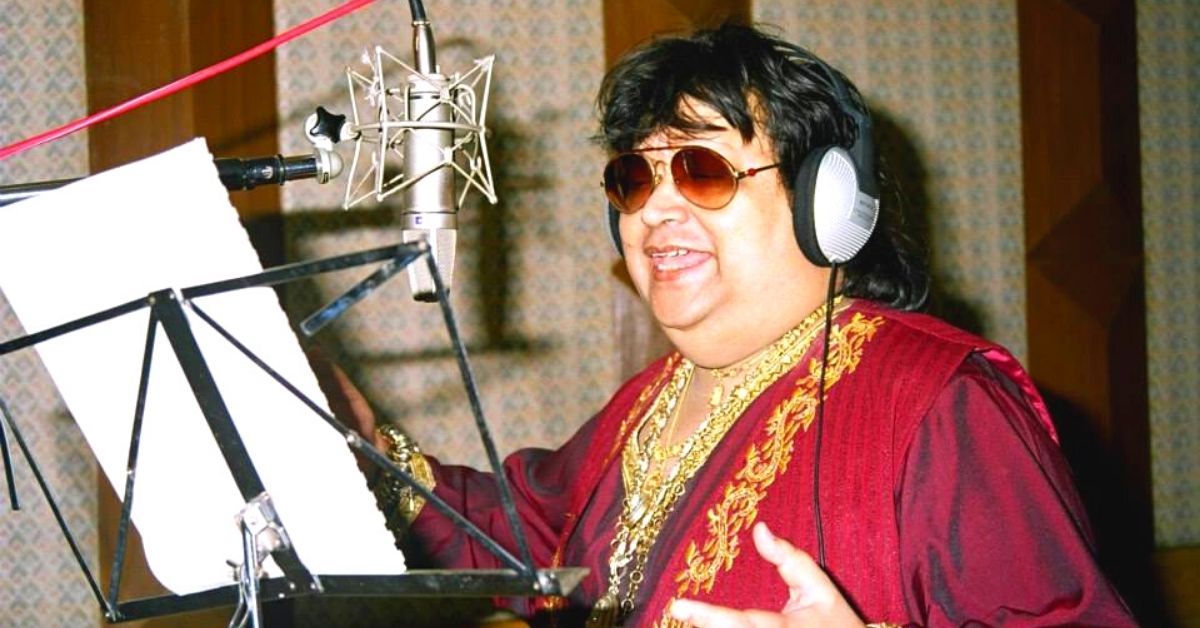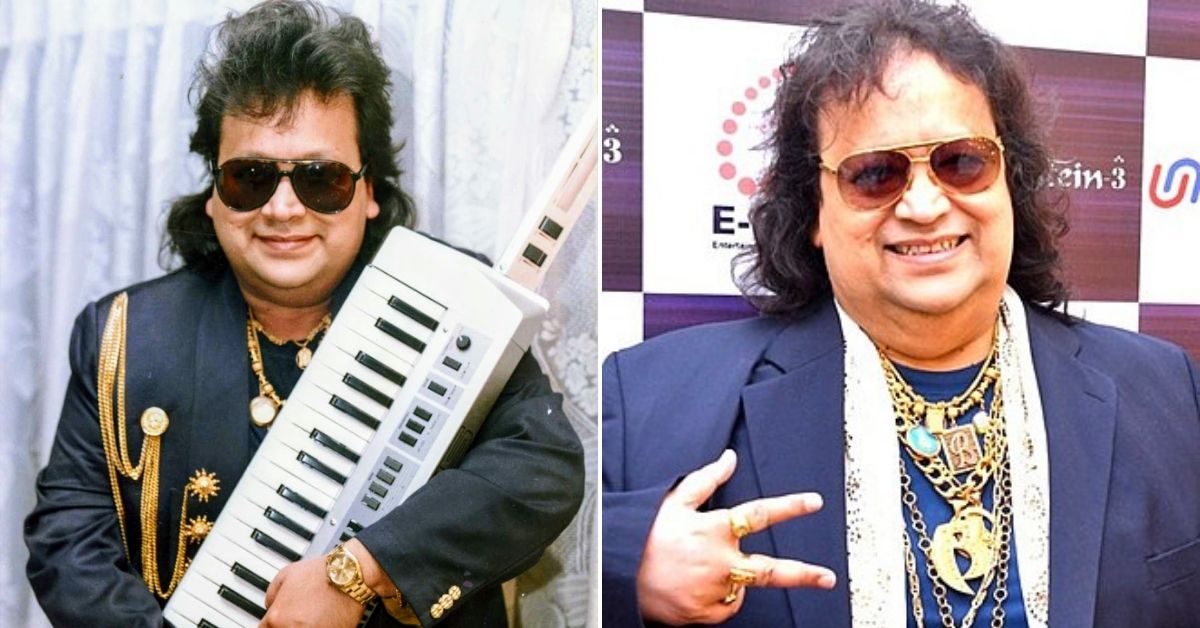Why I’ll Remember Bappi Lahiri as The Influencer Whose Music Touched Generations
On 15 February, the immortal singer-composer Bappi Lahiri passed away at the age of 69. We remember his contribution to the industry, including hits like Disco Dancer, Jimmy and more.

When I first heard about the unfortunate demise of singer-composer Alokesh (aka Bappi) Lahiri earlier this morning, it didn’t strike me how much his music influenced my taste in music. (Image above courtesy Wikimedia Commons)
Going through his catalogue, one thing became clear — Bappi Da, as he was affectionately known, was a lot more than his flamboyant sartorial choices (gold jewellery and sunglasses worn at all times of the day), and his unabashed personality about which there are many memes and parodies on the internet.
Not many may know that his nickname ‘Bapi’ was first given to him by his aunt Meera Lahiri, but this was changed to ‘Bappi’ on the suggestion of film producer Shomu Mukherjee (father to Bollywood actress Kajol).
Although he will never be ranked among the greatest Hindi film music composers like RD Burman, Shankar-Jaikishan, Laxmikant-Pyarelal, Kalyanji-Anandji or AR Rahman, his body of work deserves respect for its quality and unmistakable influence on modern music.

A Genuine Talent
Born on 27 November 1952 in Jalpaiguri, West Bengal, Bappi Da grew up in a household resonating with music.
His parents, Aparesh and Bansari Lahiri were singers and composers in Bengali music. They realised very early on that Bappi was destined to have a career in music. What’s more, his parents were friends with the Late Lata Mangeshkar, who also noticed the child’s interest in music. Upon her recommendation, a four-year-old Bappi (some accounts state as a three-year-old) began learning how to play the tabla from Pandit Samta Prasad—a master practitioner. At age 11, he composed his first tune which his father recorded in Bengali.
He was about 20 when he got his first break in Bengali cinema composing for the film Daadu in 1972. But he wasn’t content with living in Kolkata and making music for Bengali cinema. This young talent wanted to compose songs for Bollywood films, and thankfully his parents supported that ambition by moving with him to Mumbai.
At the age of 21, he made his Bollywood debut by composing the soundtrack to Nanha Shikari (1973) produced and directed by Shomu Mukherjee.
Much of his earlier career was spent composing music for small budget films, although songs like Mohe Kar De Bidda, featuring the singer Mukesh in the 1974 film Bazaar Band Karo and Rahen Na Rahen Chahe, featuring Kishore Kumar and Lata Mangeshkar from the 1974 film Ek Ladki Badnaam Si, are eminently worth a listen.
These movies did little to garner mass attention, but Bappi Da’s music caught the attention of producer-director Tahir Hussain. He contacted this young talent to compose music for his upcoming film Madhosh (1974) since a very busy RD Burman was unavailable.
While working on Madhosh, Bappi and Tahir struck a relationship that would land the former his first big break in Zakhmee (1975). With songs like Aao Tumhe Chand Pe Lejayen, Jalta Hai Jiya Mera and Nothing is Impossible, Bappi had finally arrived on the big stage. What Zakhmee showcased was Bappi’s effortless command over a range of musical styles and instruments. Never forgetting the foundations set by Hindustani classical and Bengali folk music, Bappi engaged in simple yet heart-catching Western orchestration and even psychedelic rock.
After Zakhmee came the 1976 film Chalte Chalte, where he composed classics like the title song and Pyaar Mein Kabhi Kabhi. It was after Zakhmee and Chalte Chalte, that Bappi became a sought-after music composer in Bollywood. What followed were 1977 films like Aap Ki Khatir (with the song — Bambai Se Aaya Mera Dost), Pratima Aur Payal (Meri Payal Ki Jhankar), Suraag (1982; Bheega Bheega Mausam) and Sangram (1993; the qawwali-inspired Dildar Humare Dil KO Tum).
In 1979 there came Lahu Ke Do Rang, where he composed legacy-defining songs like Chahiye Thoda Pyaar (featuring Kishore Kumar), Hua Gul Khilata Hua Mera Yaar, Zid Na Karo (Yesudas) and Mathe Ki Bindiya.
His classics through the 1970s and early 1980s take us into the depths of his versatility, remarkable sense of rhythm and melody, penchant for beautiful orchestration and his experimental ways, which he would showcase further through the 1980s and 90s. You could hear instruments ranging from a santoor, shehnai, sitar and flute to drums, trumpet and the synth in his music. And he composed all kinds of tunes ranging from bhajans, folk songs, Hindustani classical songs and qawwalis to Western Classical, psychedelic rock and later on, disco, which could capture a head-spinning range of moods.
Some critics argue that his compositions from 1973 to the early 1980s stood shoulder-to-shoulder with greats like SD Burman, RD Burman, Laxmikant-Pyarelal and the rest.
Disco Dancer
However, everything changed for Bappi following a visit to the United States in the late 1970s where he first encountered disco music and its hypnotic beats. He was won over by this genre, coming back to India and composing his first disco song called Mausam Hai Gaane Ka Bajane Ka from the 1979 film Surakksha, starring Mithun Chakraborty.
Disco Dancer (1982), however, marked an inflection point in the career of Bappi Lahiri. It also possibly remains his most popular film album to date. The wild success of Disco Dancer saw Bappi move further away from his Bengali folk and Hindustani classical roots with some critics even arguing that he had lost touch with melody. Others, meanwhile, point to his savvy in understanding the trends that were to come in Bollywood music.
Moreover, films in the 1980s became a lot more formulaic and producers needed composers who could churn out tunes by the dozen. Bappi saw that he could fit into that mould as well and went on a tear. Just to offer some perspective: In 1986, he entered the Guinness Book of World Records for recording over 180 songs for 33 films, a remarkable feat.
Although many purists scoff at his disco-inflected and synth-pop tunes, it continues till this day to inspire multiple tributes, remixes and revivals from songs like Tamma Tamma Loge from Thanedaar (1990), Dance Dance (1987), Raat Baaki from Namak Halaal (1982) and Yaad Aa Raha Hai from Disco Dancer (1982).
Of course, Bappi has been often accused of plagiarising from international artists like taking Tamma Tamma Loge from Mory Kante’s Tama, but at the same time, Hip Hop music thrives on the culture of sampling borrowed heavily from his arsenal of songs. The standout example is probably Addictive by Truth Hurts featuring Rakim, which was produced by DJ Quik, who sampled Thoda Resham Lagta Hai. As The Guardian notes, “Bollywood got its own back, though, lodging a $500m lawsuit against the label Aftermath after a cease-and-desist order went unheeded. Composer Bappi Lahiri eventually won a court injunction halting the sale of the song after likening it to ‘cultural imperialism’.”
Despite this lawsuit, Addictive began a stream of other music that sampled the song from DJ Harry Anand’s Kaliyon ka Chaman onwards. Madlib (aka Otis Jackson Jr.), who remains one of the most influential figures in Hip Hop, sampled a couple of Bappi’s compositions for his instrumental album Beat Konducta in India (2007).

Nonetheless, the song that has possibly garnered the largest cult following is Jimmy Jimmy from Disco Dancer (1982). The movie itself was a smash hit in the erstwhile Soviet Union when it was released there in 1984.
The song was remixed by a Russian techno band Ruki Vverh! in the late 1990s, while many have performed the original song in reality shows across present-day Russia and Ukraine. Rapper MIA too sampled the song (almost bar-for-bar), but still managed to make it sound fresh in her inimitable style.
In other words, the scope of his musical influence is astonishing. In addition to Hindi film music, he worked extensively in other regional film industries like Bengali, Telugu, Tamil and Kannada. By any marker, it’s a remarkable body of work. This should ideally inspire appreciation and love rather than memes and mockery that have come to define that latter part of his life. Hopefully, we can find the time today to appreciate his music.
(You can listen to my Bappi Lahiri playlist here.)
(Edited by Yoshita Rao)
Like this story? Or have something to share? Write to us: [email protected], or connect with us on Facebook and Twitter.
If you found our stories insightful, informative, or even just enjoyable, we invite you to consider making a voluntary payment to support the work we do at The Better India. Your contribution helps us continue producing quality content that educates, inspires, and drives positive change.
Choose one of the payment options below for your contribution-
By paying for the stories you value, you directly contribute to sustaining our efforts focused on making a difference in the world. Together, let’s ensure that impactful stories continue to be told and shared, enriching lives and communities alike.
Thank you for your support. Here are some frequently asked questions you might find helpful to know why you are contributing?


This story made me
-
97
-
121
-
89
-
167











